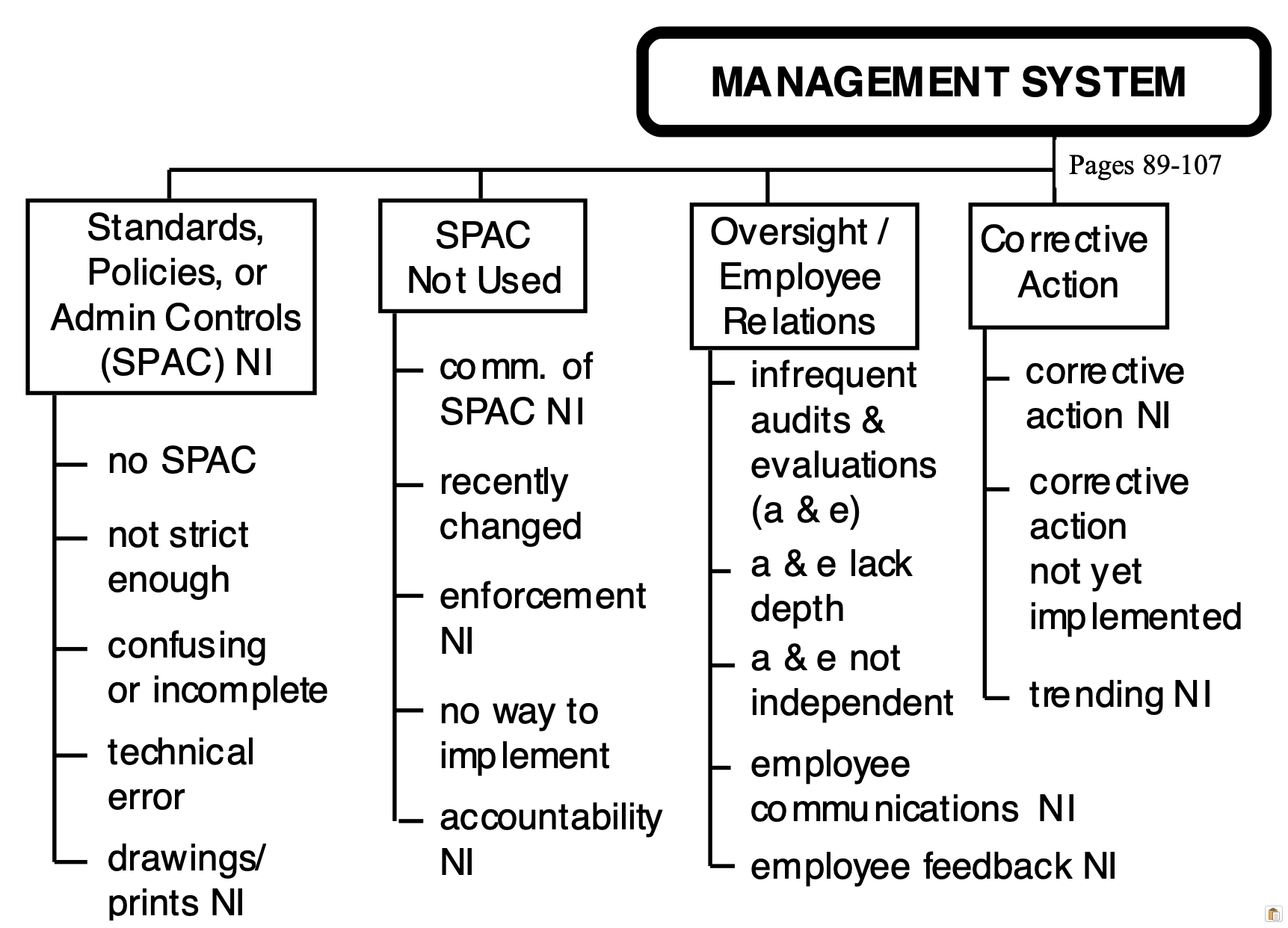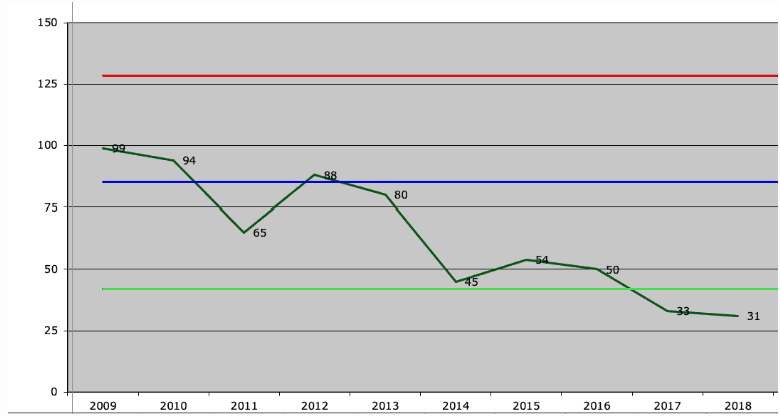What is Senior Leadership’s Role in Root Cause Analysis

What Does Senior Leadership Want?
Senior leadership wants root cause analysis to uncover the fixable root causes of significant accidents and precursor incidents AND to recommend effective fixes to stop repeat incidents.
But what does senior leadership need to do to make sure this happens? What is their role in effective root cause analysis?
Here’s a quick list:
- Best root cause system
- Insist that the system is used
- Be involved in incident reviews
- Insist that Management System causes are identified and addressed
- Insist on timely implementation of fixes
- Track the status of the implementation of fixes
- Use trends to manage the business and improvement initiatives
- Become more proactive
Let’s look at these in slightly more detail.
Best Root Cause System

Because so much is riding on the effective performance of a root cause system, leaders know that second-best systems aren’t good enough. They don’t want to bet their company’s future on someone asking why five times. That’s why they feel assured when their team uses advanced root cause analysis to find and fix the real root causes of problems.
What is advanced root cause analysis? The TapRooT® Root Cause Analysis System. CLICK HERE to find out more about advanced root cause analysis and root cause analysis fundamentals.
Insist That The System Is Used

One common theme in companies that get the most from their performance improvement programs is that senior leaders ASK for investigations. When they see a problem, they insist that the advanced root cause analysis process is used to get to the root causes and develop effective fixes. When middle management and employees see senior leadership asking for investigations and root cause analysis, they want to be involved to help the company improve.
Be Involved in Incident Reviews

When senior leaders ask for investigations, it’s only logical that they would want to review the outcome of the investigation they asked for. But it goes beyond being present. Senior management knows what to look for and how to make the review process a positive experience. People often get rewarded for good investigations. When the review process is a positive experience, people want to participate and have pride in their work.
Insist that Management System Causes Are Identified and Addressed

What is a Management System cause? Management System causes are identified in the Management System Basic Cause Category on the TapRooT® Root Cause Tree® Diagarm (a section of the copyrighted diagram is shown above and is used by permission of System Improvements, Inc.). These causes may be controversial because they are related to how a facility or company is being managed – the standards, policies, controls, evaluations, culture, and corrective action systems of the company. Senior management should insist that this Basic Cause Category is investigated and any issues are effectively addressed.
Insist on Timely Implementation of Fixes / Track the Status of the Implementation of Fixes

You might not believe this, but I’ve seen many examples of companies where they performed root cause analysis, developed fixes, and then were very slow to implement them. It was so slow that the incidents repeated themselves, sometimes several times, before any fix was implemented.
Good senior leadership insists on prompt implementation of fixes and makes sure they are kept up to date on the progress of implementation. This requires setting due dates, assigning resources, and a system to track the implementation of the corrective action.
Use Trends to Manage the Business and Improvement Initiatives

Good root cause analysis efforts produce statistics that can help leaders manage. That’s why senior leadership understands the use of advanced trending techniques and gets reports on the latest root cause trends.
Become More Proactive

Would you rather wait for an accident or incident to find your next improvement opportunity? Or would you rather target and use an audit or assessment to find problems and then apply advanced root cause analysis to develop effective improvements? The best senior leaders know the right answers to these questions.
That’s the List
That’s it! Senior leaders use proactive improvement and investigations of precursor incidents and major accidents (which rarely happen) to find where improvement needs to happen. They are involved with the system and use it to keep their company ahead of the competition. They are updated about the status of fixes and current trends. They reward those who make the system work.
Does that sound like your facility? Or do you have an improvement opportunity?
Benchmark Your Improvement Initiatives

Where can you benchmark your improvement initiatives against industry leaders from around the world? Simple. Attend the 2024 Global TapRooT® Summit at the Horseshoe Bay Resort (near Austin, TX) on May 1-3. CLICK HERE for more Summit information.
In addition to seven motivational Keynote Speakers, there are sessions designed to help you network and benchmark your improvement efforts. These include:
- Workshop: How Do You Build a Successful Improvement Program?
- TapRooT® RCA Can Help Take Your Safety Culture to the Next Level
- Safety Improvement Best Practice Sharing
- Using Trending to Manage Improvement
- Unique Ways to Use TapRooT® RCA (Roundtable Discussion)
- Reducing Repeat Incidents Using TapRooT® RCA
- Reducing Deviation by Proactively Using TapRooT® RCA
- Maintenance & Reliability Best Practice Sharing
- Lessons Learned From TapRooT® RCA & Machine Learning
- Enfragen Lessons Learned from Equifactor® Implementation
- Air Canada Maintenance: Implementation Success Story Update
- Learning From Success to Improve Future Performance Using TapRooT® RCA
- Managing Your Improvement Backlog (Resource Schedule)
- R&D Equifactor® Use/Implementation at Syzygy Plasmonics
And that’s just a sample of all the sessions you can learn from. For the complete schedule, CLICK HERE.
Because there is so much to learn, you should bring key managers and your whole improvement team. When you do, you will qualify for the discounts below…

Don’t wait! Select the pre-Summit Course (held on April 29-30) of your choice and then REGISTER for the course and the Summit.
We are looking forward to seeing you there!




